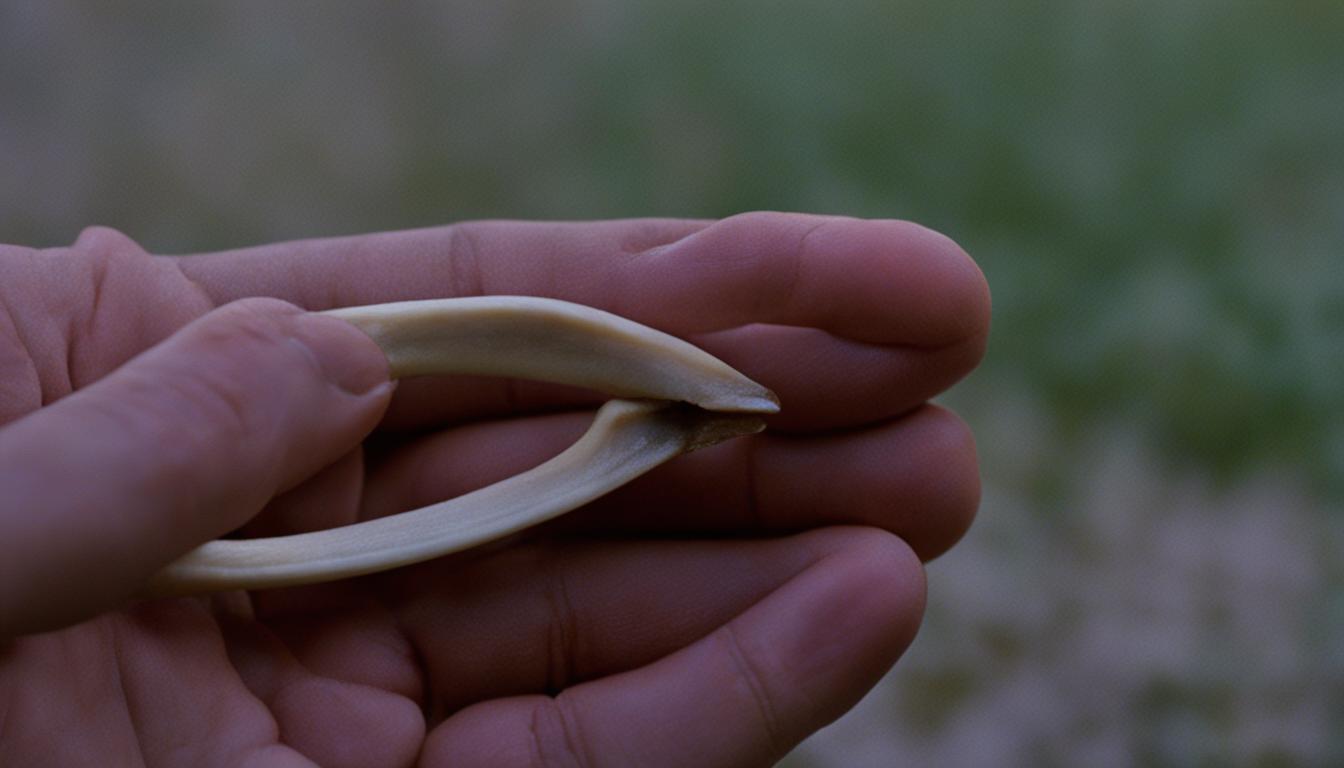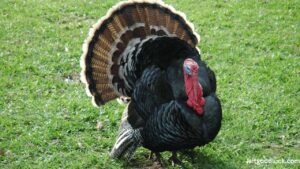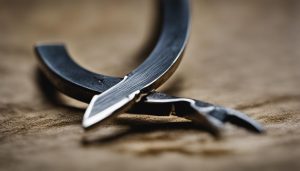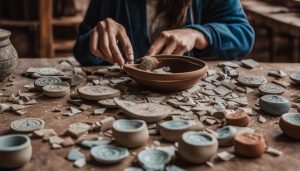In the realm of turkey superstitions and customs, there is a particular tradition that involves saving a specific part of the bird for good luck. This tradition centers around the turkey wishbone, which is believed to be a lucky charm with the power to grant wishes. So, what exactly is the wishbone and how does it play a role in this age-old turkey tradition?
Contents
- 1 The History of the Wishbone Tradition
- 2 Anatomy of the Wishbone: Understanding the Significance of Turkey’s Furcula
- 3 The Thanksgiving Wishbone Tradition
- 4 Fun Facts about Wishbones
- 5 Conclusion
- 6 FAQ
- 6.1 What part of a turkey is saved for a superstitious good luck custom?
- 6.2 Where is the wishbone located in a turkey?
- 6.3 How did the wishbone tradition originate?
- 6.4 What is the significance of the wishbone in the tradition?
- 6.5 How is the wishbone broken during Thanksgiving?
- 6.6 What are some tips for winning the wishbone?
- 6.7 Are there any other superstitions associated with wishbones?
- 6.8 Did dinosaurs have wishbones?
- 6.9 Is breaking the wishbone a popular tradition?
- 7 Source Links
Key Takeaways:
- The wishbone, or furcula, is the forked chest bone found in turkeys and other birds.
- It is believed that breaking the wishbone can grant the wish of the person who ends up with the larger piece.
- This tradition originated with the Ancient Romans, who viewed the wishbone as a symbol of good luck.
- The wishbone should be left out to dry before being snapped to ensure it cracks in the correct way.
- The wishbone tradition has been passed down through generations and remains a popular activity during Thanksgiving celebrations.
The History of the Wishbone Tradition
The wishbone tradition, a beloved part of Thanksgiving celebrations, has a fascinating history that dates back to ancient civilizations. This custom can be traced back to an ancient Italian civilization called the Etruscans, who believed that birds possessed divine powers. They preserved the furcula, or wishbone, of chickens as a symbol of these powers. The Romans, influenced by the Etruscans, adopted this tradition and began breaking chicken wishbones as a way to wish for good fortune.
As the Romans expanded their empire, they brought the wishbone tradition to England, where it continued to thrive. The English settlers who later arrived in America, particularly the Pilgrims who celebrated the first Thanksgiving in Plymouth, Massachusetts, brought the wishbone tradition across the Atlantic. However, in modern American tradition, it is the turkey’s wishbone, rather than the chicken’s, that is used.
The wishbone tradition has been passed down through generations and remains a popular activity during Thanksgiving celebrations. It is a testament to the cultural significance and enduring nature of this ancient Roman tradition.
| Wishbone Tradition | Ancient Roman Tradition | Originated |
|---|---|---|
| Turkey Wishbone | Chicken Wishbone | Ancient Italy (Etruscans) |
| Symbol of Good Luck | Symbol of Divine Powers | Ancient Rome |
| Popular Thanksgiving Activity | Continued from Ancient Times | Passed down through generations |
“The wishbone tradition has a rich history that spans centuries and continents. It is a reminder of the ancient beliefs and customs that continue to shape our modern celebrations.”
Anatomy of the Wishbone: Understanding the Significance of Turkey’s Furcula
Have you ever wondered about the fascinating structure of a turkey’s wishbone? Known scientifically as the furcula, the wishbone is a forked bone formed by the fusion of a bird’s two collarbones or clavicles. In turkeys, it is located between the neck and chest and plays a crucial role in flight and respiration. This unique bone holds great significance in the tradition of breaking the wishbone.
The furcula, also referred to as the wishbone, acts as a support for the thoracic skeleton during the bird’s flight. It expands and contracts with the movement of the thorax and aids in respiration. This bone is not exclusive to turkeys; it can be found in various bird species. However, it is the turkey wishbone that has captured the attention and imagination of many, particularly during Thanksgiving celebrations.
“The wishbone should be left out to dry before it is snapped, allowing it to crack in the correct way.”
The wishbone tradition revolves around the belief that it holds the power to grant wishes. When the turkey is prepared for Thanksgiving dinner, the wishbone is typically set aside to dry. Once it has dried, two people each hold one end of the wishbone and pull, hoping to snap it and claim the larger piece. The person who ends up with the larger piece is believed to have their wish granted.
Understanding the anatomy and significance of the wishbone adds an extra layer of appreciation to the Thanksgiving tradition. It reminds us of the rich history and culture surrounding this centuries-old custom, passed down through generations. So, this Thanksgiving, as you gather with loved ones to enjoy a delicious meal, take a moment to marvel at the intricate structure of the turkey’s wishbone and partake in the joyous tradition of breaking it for good luck.
| Key Points |
|---|
| • The wishbone, or furcula, is a forked bone formed by the fusion of a bird’s collarbones. |
| • It acts as a support for the bird’s thoracic skeleton during flight and aids in respiration. |
| • The tradition of breaking the wishbone during Thanksgiving involves two people each holding one end and pulling, with the person who gets the larger piece believed to have their wish granted. |
| • Understanding the anatomy and significance of the wishbone adds depth to the Thanksgiving tradition. |
The Thanksgiving Wishbone Tradition
The Thanksgiving wishbone tradition is a beloved activity that brings families and friends together during the holiday season. It involves breaking the wishbone of a turkey and making a wish. The person who ends up with the larger piece of the wishbone is believed to have their wish granted. If you want to increase your chances of winning the wishbone, here are some tips:
- Ensure the wishbone is completely dry before breaking it. You can dry it for a whole year, from Thanksgiving to Christmas, or use an oven to quickly dry it.
- Make sure both participants have dry hands and a firm grip on the bone.
- Hold the wishbone closer to the base or center of the “V” shape to increase your chances of winning.
- Choose the thicker side of the bone, as it puts more stress on the other person pulling.
- Let the other person do most of the pulling to increase the likelihood of getting the larger piece.
By following these tips, you can improve your chances of winning the wishbone and having your wish come true. Remember, the wishbone tradition is all about fun and good luck, so enjoy the moment and embrace the magic of Thanksgiving.
Table: Tips for Winning the Wishbone
| Tip | Description |
|---|---|
| Ensure the wishbone is dry | Drying the wishbone allows it to crack in the correct way. |
| Have dry hands and a good grip | Dry hands and a firm grip on the bone give you better control. |
| Hold the bone closer to the base or center | This increases your chances of getting the larger piece. |
| Choose the thicker side | Puts more stress on the other person pulling. |
| Let the other person do most of the pulling | Increases the likelihood of getting the bigger piece. |
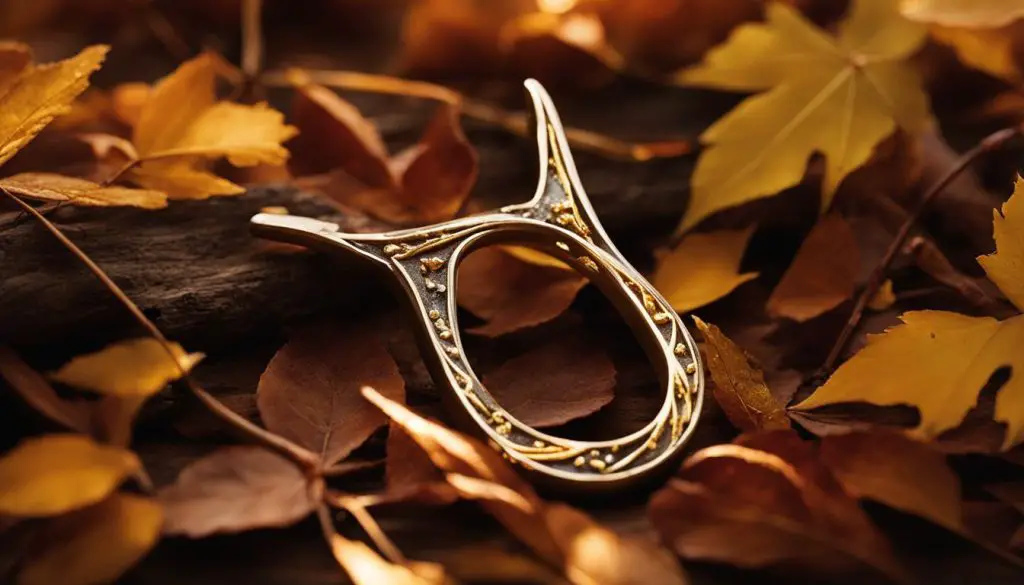
Table: Comparing Wishbone Superstitions
| Superstition | Description |
|---|---|
| Wishbone Divination | A practice of interpreting the outcome of a wishbone’s twists and cracks as a sign or omen |
| Goose Wishbone Weather Prediction | Belief that the shape, cracks, and appearance of a goose wishbone can predict upcoming weather patterns |
Fun Facts about Wishbones
As you gather with loved ones to celebrate Thanksgiving, take a moment to learn some fascinating facts about wishbones. These bone structures, also known as furcula, hold a rich history and have a few surprising connections.
Wishbones in Dinosaurs
Did you know that wishbones aren’t exclusive to turkeys and humans? Some dinosaurs, particularly certain species of theropods, also possessed wishbones. These prehistoric creatures had their own version of this unique bone structure, which provided support for their thoracic skeletons during flight. So, the tradition of breaking wishbones extends back millions of years to the ancient world of dinosaurs.
“Some dinosaurs, like the theropods, also had a wishbone. It’s amazing to think about how this tradition has been passed down through time, connecting us to creatures that roamed the earth long ago.”
The Traditional Breaking of the Wishbone
Breaking a wishbone has become a beloved tradition during Thanksgiving celebrations. The process involves two individuals each grabbing one end of the wishbone and pulling apart. The person who ends up with the larger piece is considered the winner and is believed to have their wish granted. This lighthearted activity adds an element of fun and anticipation to the holiday festivities.
If you want to increase your chances of winning the wishbone, try holding it closer to the base or center of the “V” shape. This puts more stress on the other person pulling, giving you an advantage. Additionally, having dry hands and a secure grip on the bone can make a difference. So, get ready to make your wish and participate in this time-honored tradition!
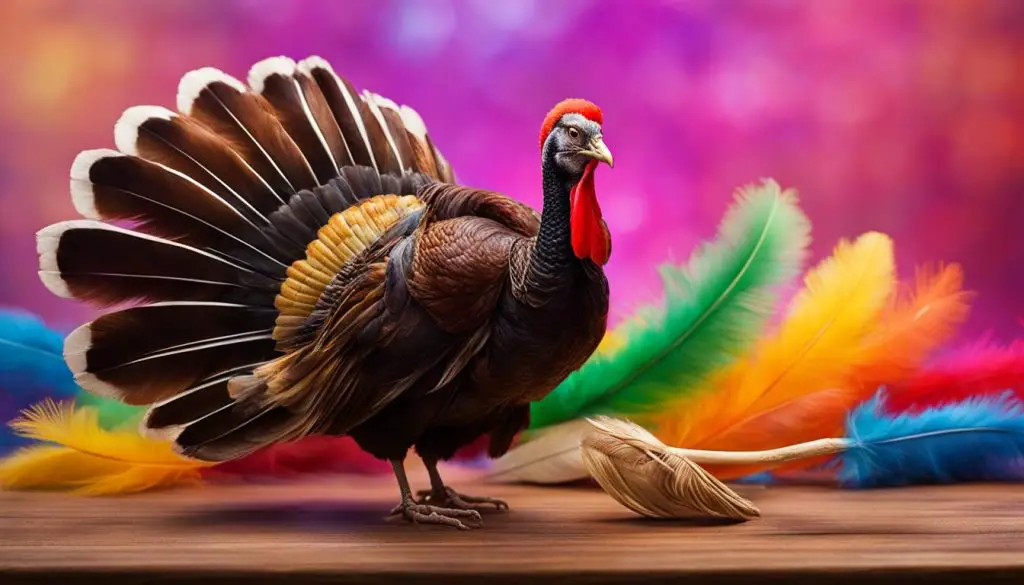
A Complete Table of Wishbone Fun Facts
| Fact | Description |
|---|---|
| Wishbones in Dinosaurs | Some dinosaur species, such as certain theropods, had their own version of wishbones that provided support during flight. |
| The Traditional Breaking of the Wishbone | The Thanksgiving tradition of breaking a wishbone involves two people pulling apart the bone, with the person who gets the larger piece believed to have their wish granted. |
As you enjoy the festivities and create new memories this Thanksgiving, remember the fascinating history and traditions associated with the wishbone. It’s a small bone that holds a lot of significance and connects us to ancient civilizations, dinosaurs, and the joy of making wishes.
Conclusion
The wishbone tradition is a cherished part of Thanksgiving celebrations, rooted in ancient civilizations and passed down through generations. Breaking the wishbone of a turkey brings people together in a fun and symbolic activity during the holiday season. As two individuals pull apart the wishbone, the person who ends up with the larger piece is believed to have their wish granted.
While the wishbone tradition may not hold any scientific basis, it holds a special place in the hearts of many. Whether dried for a whole year, from Thanksgiving to Christmas, or quickly dried in an oven, the wishbone must be completely dry for the perfect break. With dry hands and a good grip, participants strive to win by holding the bone closer to the base or center of the “V” shape.
From divination practices using wishbones to the involvement of dinosaurs in this ancient tradition, wishbones hold a rich history and folklore. Despite its origins, the wishbone tradition remains a lighthearted and engaging activity, embodying the spirit of Thanksgiving and bringing joy and excitement to the holiday festivities.
FAQ
What part of a turkey is saved for a superstitious good luck custom?
The wishbone.
Where is the wishbone located in a turkey?
The wishbone is located between the neck and chest of the turkey.
How did the wishbone tradition originate?
The wishbone tradition originated with the Ancient Romans, who believed it was a symbol of good luck.
What is the significance of the wishbone in the tradition?
The wishbone is believed to hold the power of granting wishes.
How is the wishbone broken during Thanksgiving?
Two people each hold one end of the wishbone and pull. The person who ends up with the larger piece has their wish granted.
What are some tips for winning the wishbone?
Holding the bone closer to the base or center of the “V” shape and choosing the thicker side of the bone increases the chances of winning.
Are there any other superstitions associated with wishbones?
In the past, wishbones were used for divination, such as predicting weather using a goose wishbone.
Did dinosaurs have wishbones?
Some dinosaurs, including certain species of theropods, had wishbones.
Is breaking the wishbone a popular tradition?
Yes, breaking the wishbone remains a popular activity during Thanksgiving celebrations.

